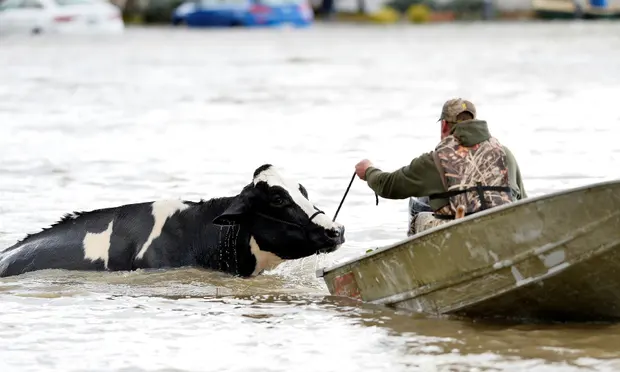



Article by: Hari Yellina
According to new research on the devastating 2019 floods in North West Queensland, specialised diagnostics are needed to better portray the chilling effects of tropical cyclones and tropical depressions on northern Australian livestock. A livestock chill forecast, rather than relying on variable forecasts that may not capture the severity and compound conditions of a weather event, is beneficial, according to research published in the journal Scientific Reports about the catastrophic 2019 north west Queensland flood event that killed half a million cattle. The February 2019 extreme weather event in northern Queensland saw record-breaking rainfall, prolonged high wind gusts, and relatively chilly daytime temperatures, resulting in cattle losses of over 500,000 in the northwest Queensland Gulf region.
Using a livestock chill index that combined daily rainfall, wind, and surface temperature data, the new study looked at the livestock chill conditions associated with this week-long compound weather event and their potential for prediction from eleven world-leading sub-seasonal to seasonal forecast systems. Researchers discovered that the potential heat loss of animals was moderate to high on average over the event week, with severe conditions on the day of highest rainfall (February 5). The researchers discovered that a one-week lead prediction showed a 20-30% probability of extreme livestock chill conditions over the northwest Queensland Gulf region, “however the highest probabilities were located to the west of where the greatest livestock impacts were observed,” using calibrated forecasts from the Bureau of Meteorology.
ACCESS-S1, a collection of multi-week to seasonal forecast model output generated by the ACCESS Prediction System, provided the best forecast for the BOM. The projections of livestock chill conditions a week previous to the commencement of the floods revealed the chances of extreme conditions were around 40% or around times the climatological likelihood, despite not being available to the general public at the time of the floods. The majority of their prediction variables indicated a likelihood of extreme weather of greater than 20%, which is more than double the climatological probability. “It appears that the prediction accuracy stemmed from the expert forecasting of extreme rainfall, rather than chilly daytime temperatures and high wind forecasts,” researchers noted.
Despite an obvious link between the observed extreme weather and an active Madden-Julian Oscillation event stalling in the western Pacific, the bulk of 1-week lead S2S predictions showed no signs of the MJO slowing down. The livestock chill index was established for southern Australian sheep, thus it may not be the optimum metric to describe the impacts of exposure on tropical cow breeds, according to the researchers. Instead, they emphasise the need for customised diagnostics that better reflect the chilling effects of tropical cyclones and tropical depressions on northern Australian livestock in the summer.